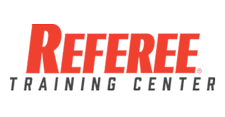Meaningful board leadership requires that the board agenda truly be the board’s agenda. Though some individual members of an association and the board may be more in touch with what is going on in the association, the board’s job is not predominantly about what is going on within the association. More so, its job is more about defining the association’s big picture. The association board should be focused more on looking up and out than down and in. An agenda that just keeps up with membership activity misses the point.
The board agenda should be about the powerful and creative job of strategic leadership. The agenda should not be about running an organization as much as it should include items that the organization should be running toward and what it stands for in officiating.
Selecting subject matter is the biggest challenge of a successful board meeting. Proper meeting content is derived from the job to be accomplished, not just what board members would enjoy talking about.
Following are some dos and don’ts of a solid board agenda and ultimately a successful board meeting:
Do announce the anticipated length of the meeting as far in advance as possible, allowing the board to determine if another date or time will best balance the needs of the task and of the individual members.
Do strive for a short agenda. Instead of facing a plethora of issues, a shorter yet deeper list is more productive. If the board sees a lengthy agenda, it is a sign that something is wrong within the association.
Don’t make your agenda unrealistic. If there is too much business to be covered in the allotted time, either you won’t cover it anyway, or your meeting will run agonizingly long. Be mindful of the fact that board members have donated their time and don’t want to be in a meeting all night. Often routine business can be handled by sub-committees, freeing up valuable time in the meetings.
Do avoid little items. Choose the right level of issue prior to placing items on an agenda, meaning there will be fewer issues but big items.
Do send all materials to board members well in advance of the meeting so that there is no excuse for failing to prepare.
Do make attendance required for board meetings. The only people hurt by poor attendance are the other volunteers who faithfully show up. Make the meeting agenda interesting and members will attend because they feel they can accomplish something.
Do allow the board to elicit as much divergence as possible while covering topics on the agenda, but resolve any issues into a single position. The content of board meetings is driven mainly by long-term goals, augmented by occasional, carefully focused attention to slight adjustments in previous policy wording.
Don’t allow for scattered focuses of discussion and all the familiar weaknesses of group discipline to conspire against the efficient use of board energy.
Do maintain an up-to-date board job description. Controlling the agenda cannot happen one meeting at a time, so the board must look to the long term and what it wants to accomplish. That is found in the board job description, which can be seen as the board’s perpetual agenda; everything the board does can, and must, be derived from it. With a perpetual agenda, the board has a starting place from which it can plan major board work into the future.
Do adopt your schedule for the year. The board should plan what steps it must take to accomplish its objectives for the year. Those steps form a basis for agendas.
Do allow the board’s chairperson to authorize and further define and implement any decision of the board as long as he or she uses a reasonable interpretation of the board’s words.
Don’t set a set length of time for the board meeting. Some might say that board meetings should be one to two hours. Some might say four to five hours is more appropriate. No single answer is correct. A board comes together to fulfill the task of governing. The nature of that task varies.





